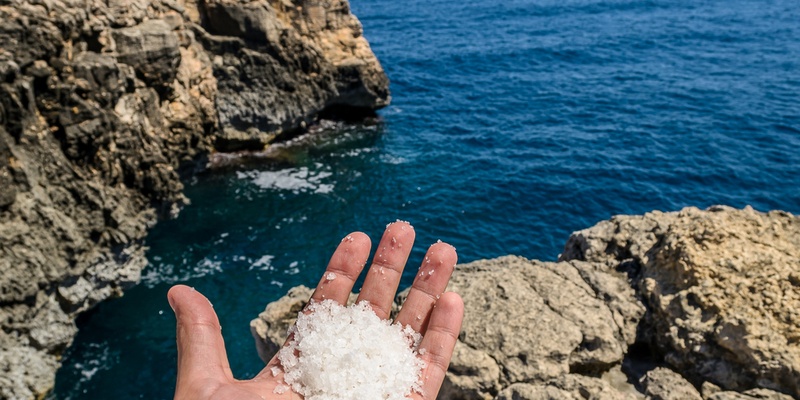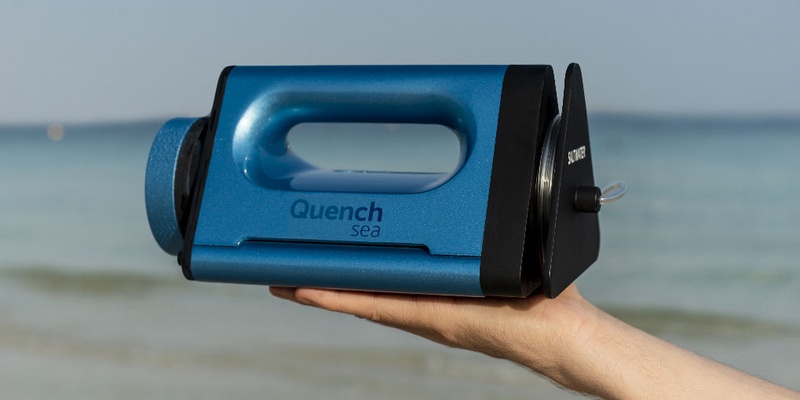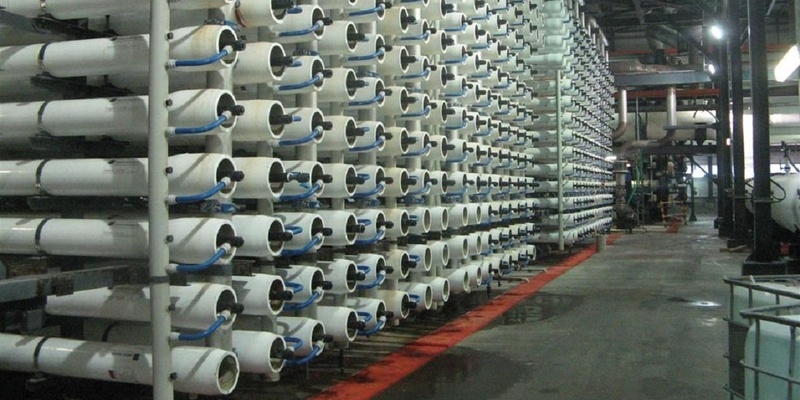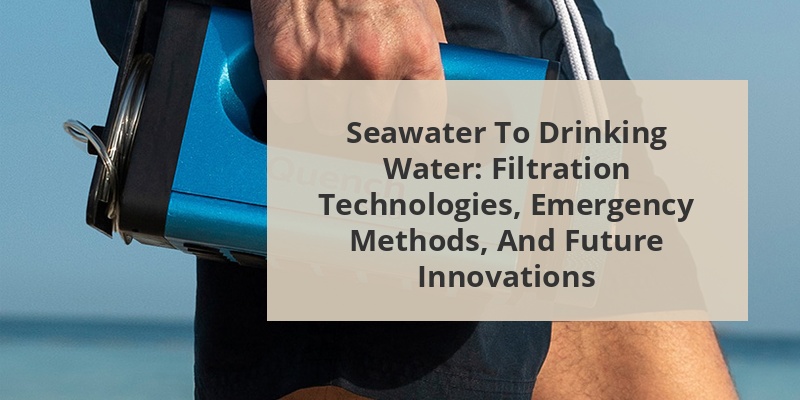Ocean water covers more than 70% of our planet, yet it’s undrinkable in its natural state. The high salt content in seawater (approximately 3.5%) makes it harmful to human consumption as it can cause severe dehydration, kidney damage, and even death. However, technological advancements have made it possible to convert seawater into safe drinking water through various filtration processes. These methods remove salt, contaminants, and microorganisms from ocean water, making it potable. This article explores the different techniques available for filtering ocean water, their effectiveness, costs, and practicality in various scenarios.
Content Navigation
Why Ocean Water Is Unsafe for Drinking

Seawater contains approximately 35 grams of dissolved salts per liter, primarily sodium chloride. When consumed, this high salt concentration forces your kidneys to produce urine that’s more concentrated than the seawater itself, requiring more water from your body than the seawater provides. This leads to severe dehydration as your body tries to flush out excess salt.
Beyond salt, ocean water contains various contaminants including microplastics, industrial pollutants, bacteria, viruses, and other microorganisms. Many coastal areas suffer from sewage discharge, agricultural runoff, and industrial waste that further contaminate seawater.
Drinking untreated seawater can cause serious health issues including kidney failure, neurological damage, and severe dehydration that can be fatal. Even small amounts can make you seriously ill, particularly in survival situations where maintaining hydration is critical.
Primary Methods for Filtering Ocean Water
Several established technologies exist for converting seawater into freshwater, a process known as desalination. These methods vary in efficiency, cost, energy requirements, and output quality.
| Method | Energy Requirement | Efficiency | Cost | Scale |
|---|---|---|---|---|
| Reverse Osmosis | Moderate to High | High (30-50%) | $0.50-$2.00 per m³ | Small to Large |
| Thermal Distillation | Very High | Moderate (25-40%) | $0.80-$2.50 per m³ | Medium to Large |
| Electrodialysis | Moderate | Moderate (40-60%) | $0.60-$1.90 per m³ | Small to Medium |
| Solar Distillation | Very Low | Low (10-30%) | $1.00-$2.00 per m³ | Small |
Reverse Osmosis
Reverse osmosis (RO) is currently the most widely used desalination technology globally. It works by pushing seawater through a semi-permeable membrane under high pressure. The membrane allows water molecules to pass through while blocking salt ions and other impurities. Modern RO systems can remove over 99.5% of dissolved salts and effectively filter out bacteria, viruses, and other contaminants.
Call 888-896-7031 for Free Local HVAC Quotes – Compare and Save Today!
Large-scale RO plants typically include several treatment stages: preliminary filtration to remove larger particles, chemical pretreatment, the RO process itself, and post-treatment to adjust pH and add minerals for taste. Energy recovery devices have significantly improved efficiency by capturing pressure energy from the waste brine stream.
The main drawbacks of RO include high energy consumption (though improving with newer technology), membrane fouling that requires regular maintenance, and the production of concentrated brine that must be safely disposed of to avoid environmental damage.
Thermal Distillation
Thermal distillation mimics the natural water cycle by heating seawater to create water vapor that is then condensed back into liquid freshwater. This method is one of the oldest desalination techniques and remains common in regions with abundant energy resources, particularly in the Middle East.
The three primary thermal distillation methods are:
- Multi-Stage Flash Distillation (MSF): Seawater is heated and passed through successive chambers of progressively lower pressure, causing it to “flash” into steam.
- Multi-Effect Distillation (MED): Uses multiple evaporation chambers where steam from one chamber helps to evaporate water in the next.
- Vapor Compression Distillation (VCD): Compresses water vapor to generate heat for evaporation in a continuous cycle.
While thermal methods produce highly pure water, they consume substantial energy, making them practical only where energy costs are low or can be combined with power generation facilities.
Electrodialysis
Electrodialysis uses an electric field to pull salt ions through ion-selective membranes, separating them from the water. Unlike RO, which pushes water through a membrane, electrodialysis moves the salt away from the water. This method works well for brackish water but is less efficient for full seawater desalination due to the high energy required for the greater salt concentration.
Call 888-896-7031 for Free Local HVAC Quotes – Compare and Save Today!
A newer variation called Electrodialysis Reversal (EDR) periodically reverses the electric field to reduce membrane fouling and extend system life. This technology is particularly effective in treating water with moderate salt content and has found applications in industrial wastewater treatment.
Solar Distillation
Solar distillation harnesses the sun’s energy to evaporate seawater. The simplest form is a solar still, which uses a transparent cover over a basin of seawater. Sunlight passes through the cover, heating and evaporating the water, which then condenses on the underside of the cover and runs into collection troughs.
Advanced solar desalination systems include multiple-effect humidification-dehumidification units and solar ponds. While these methods require minimal external energy, they typically produce smaller volumes of freshwater and require significant surface area, making them suitable primarily for small-scale or emergency applications.
Portable and Emergency Seawater Filtration

For survival situations, boating, or emergency preparedness, portable desalination options have become increasingly available. These range from hand-pumped reverse osmosis devices to solar stills that can be packed in emergency kits.
| Device Type | Water Output | Power Source | Approximate Cost | Weight |
|---|---|---|---|---|
| Manual RO Pumps | 1-5 liters/hour | Human power | $500-$2,000 | 2-7 lbs |
| Battery-Powered RO | 5-20 liters/hour | Rechargeable batteries | $2,000-$5,000 | 10-30 lbs |
| Emergency Solar Stills | 0.5-2 liters/day | Solar | $50-$200 | 0.5-2 lbs |
| Marine Watermakers | 30-150 liters/hour | Engine/Generator | $3,000-$20,000 | 50-200 lbs |
Manual reverse osmosis pumps like the Katadyn Survivor series allow survivors to generate drinking water by hand. These devices require significant physical effort but can produce 4-5 liters of freshwater per hour in an emergency. Solar still emergency kits are simpler but produce much less water, making them suitable only as backup options.
For boats and small vessels, compact watermakers powered by 12V systems or engine-driven can produce 30-150 liters per hour, enough for crews of various sizes. These systems require regular maintenance but provide reliable freshwater supplies during extended voyages.
DIY Methods for Emergency Situations
In true survival situations without specialized equipment, improvised methods can provide limited amounts of drinking water from seawater, though these should be considered last-resort options.
- Basic Solar Still: Dig a hole in beach sand above the high tide line, place a container in the center, cover the hole with clear plastic weighed down at the edges and with a small stone creating a depression in the center above the container. Condensation will collect and drip into the container.
- Evaporation Bags: Seawater in a sealed clear plastic bag will evaporate and condense on the sides, which can be carefully collected.
- Primitive Distillation: Using containers, tubing, and a heat source to boil seawater and collect the condensed steam.
These improvised methods produce minimal water and are inefficient compared to purpose-built equipment. They should only be relied upon when no alternatives exist, as the water output may be insufficient to maintain hydration in hot environments.
Environmental and Economic Considerations

Desalination presents both opportunities and challenges from environmental and economic perspectives. Large-scale desalination plants require significant capital investment, with costs ranging from $200 million to over $1 billion depending on capacity and technology. Operating costs are dominated by energy consumption, which can account for 30-60% of the total water production cost.
Environmental concerns include the discharge of concentrated brine that can damage marine ecosystems if not properly diluted or treated. Modern facilities increasingly implement diffuser systems and mix brine with other outflows to minimize impact. Energy use contributes significantly to carbon emissions unless renewable energy sources are integrated.
Some innovative facilities are now combining desalination with renewable energy, particularly in water-scarce regions with abundant solar resources like the Middle East and Australia. These integrated approaches help address both the environmental and economic challenges of desalination.
Future Developments in Seawater Filtration
Research into more efficient and sustainable desalination is advancing rapidly. Several promising technologies may transform how we filter seawater in the coming decades:
- Graphene-based membranes that could reduce energy requirements for RO by up to 20% while increasing water flux
- Biomimetic membranes inspired by natural water filters like cell membranes
- Forward osmosis systems that use the natural osmotic pressure difference rather than applied hydraulic pressure
- Wave and tidal energy integration to power coastal desalination plants with minimal carbon footprint
- Zero liquid discharge technologies that recover valuable minerals from brine while eliminating discharge concerns
Many of these technologies are currently in laboratory or pilot stages but show potential for commercialization within the next decade. As freshwater scarcity becomes more acute in many regions due to climate change and population growth, investment in improved desalination will likely accelerate.
Tips for Getting the Best HVAC Prices
- Prioritize Quality Over Cost
The most critical factor in any HVAC project is the quality of the installation. Don’t compromise on contractor expertise just to save money. - Check for Rebates
Always research current rebates and incentives — they can significantly reduce your overall cost. - Compare Multiple Quotes
Request at least three estimates before making your choice. You can click here to get three free quotes from local professionals. These quotes include available rebates and tax credits and automatically exclude unqualified contractors. - Negotiate Smartly
Once you've chosen a contractor, use the proven strategies from our guide — How Homeowners Can Negotiate with HVAC Dealers — to get the best possible final price.

